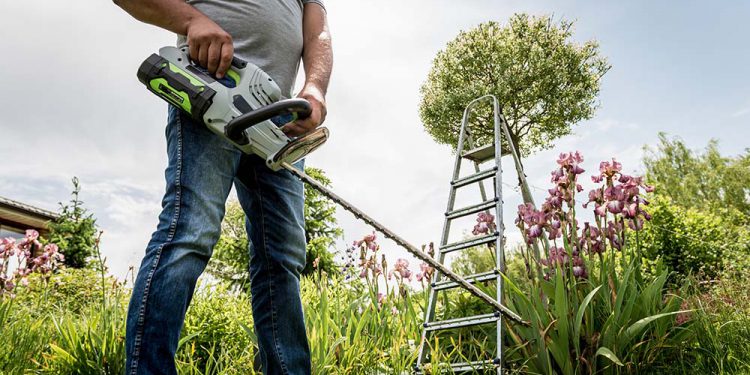Citrus trees are wonderful plants that bear delicious fruit. This is why they are so popular in Australia. Having your own citrus fruit is great for cooking, mixing cocktails, or giving your beer a little hint of lime on those gorgeous summer days.
Should lemon trees be pruned?
Just like most other trees, citrus need to be pruned as they can benefit greatly from it, particularly in the first two years. Pruning citrus trees in Australia requires the same amount of love as anywhere else in the world.
By applying controlled stress to the plant, it signals new growth and tells the plant to focus more of its energy into developing the buds that remain. This is a great way for preparing your citrus to produce bigger and better fruit as it ages!
Before you begin pruning your citrus, you will notice that a large volume of the foliage will be pointing in different directions. Once you are finished pruning, there should be more balance allowing the leaves to receive more air circulation and sunlight.
When is the best time to prune citrus?
Depending on the climate, people prune their citrus trees during spring or autumn.
- Baby lemon trees aren’t encouraged to bear fruit until they are a little older.
- Young lemon trees should be pruned as often as needed to shape their structural framework optimally.
- For old lemon trees, the best time to prune is after every harvest, once or twice a year.
Trimming and Pruning Citrus Trees Australia
For trimming and pruning Citrus trees in Australia, you’re going to need the right equipment.
Here are the tools you’ll need:
- Trust pair of pruning shears
- (or a small hand-held saw)
- Disinfectant for your tools
- Protective globes
- Organic herbicide (apply after pruning)

Here’s how to prune a citrus tree:
The weakest branches and small growths near the base of the trunk of the citrus tend to be a good sign that your plant is in need of a good pruning.
For the easiest maintenance, you should remove dead wood at any time. Just be mindful of pruning in the winter and summer months as what could be sunburned or damaged by frost might appear dead, when in actuality, they would be able to recover.
Step 1 – the planning stage
Before you begin pruning your citrus trees in Australia, you must make sure that you are properly prepared. Thus, you should take a good look at the citrus plant and identify any stray branches or unhealthy sections. Then, gather your tools and get ready for action.
Step 2 – pruning
Begin pruning by removing the deadwood and crossed branches from the citrus. Remove any thin branches in order to allow the bigger ones to get a boost.
- All of the cuts should be made at a 45-degree angle
- Do not damage the main stalk of the tree
- Remove ‘suckers’, water sprouts, and basal shoots
Step 3 – the skirting stage
Skirting refers to the removal of the bottom growths in order to prioritise fruiting at the top of the canopy. This might seem wasteful, but it is also worth cutting out any underdeveloped fruits so that the batch of buds and citrus fruits in the upper levels of your tree will be bigger and healthier.
Skirting is also essential for ensuring that no leaves are touching the soil and subsequently becoming contaminated by the herbicides or fertilisers. It’s also essential for allowing pests easy access to your citrus and spreading their diseases.
Step 4 – topping it off
Next up, you need to give your citrus a little chop at the top. Be mindful not to overdo it though. This is more for aesthetic reasons than practicality, but if you get the ratio wrong, you can cause unnecessary damage to your tree. The ratio of branches should match the dentist of its roots to make it appear better rounded and more symmetrical.
Step 5 – the stopping stage
Do not over prune your citrus! One of the most important aspects of pruning a tree is knowing when enough is enough. That’s the difference between professional tree pruners, and tree loppers. Pruning too much can cause unnecessary stress on the plant and is something that you should avoid at all costs.
Following that, you can admire your handy work and enjoy the fruits of your labour.
You may want to hire a professional for tree pruning services if you are feeling a little overwhelmed. Whilst it is certainly easy enough to pick up with plenty of practice, it can be rather time consuming if you have multiple plants that need caring for. In which case you can save a lot of time and money by simply outsourcing.
Pruning Old Citrus Trees
Not much changes when pruning older citrus trees. If you pruned early enough, your old citrus should be easier to manage. Pruning in the first or second year allows you to shape it as you see fit. You want to keep your citrus between 8 and 10 feet in height in order to make the care and harvesting processes easier. Relax and try not to prune out healthy branches when there is no practical need for it.
Pruning Young Citrus Trees
You want to prune a young citrus from as early as possible. The tiny growth that you trim off in younger trees will lessen gradually as it approaches maturity. Regular pruning of a young citrus is essential for keeping it a manageable size.
As the young tree grows older, prune the young shoots and keep the tree relatively compact. Maintain a good shape by tipping shorts and cutting back over the vigorous water shoots in the late winter time. With early and continuous shaping, you can avoid having to go over the board with pruning when the tree is older.
Pruning Dwarf Citrus Trees
Dwarf citrus trees are popular in Australia because they’re small, and yet the produce full—sized fruit, which is pretty much awesome. Here are some simple tips for looking after a dwarf citrus:
- They require the same level of care as a full-sized tree
- Pruning dwarf citrus trees is easy: remove dead and dying branches when pruning
- Encourage strong branch architecture with a solid 3-4 main branches
- Open base shape is great for catching sun and air
- Remove shoots that come off the main trunk beneath the graft
- Pruning in their dormancy during winter is recommended
If you are keen to have your citrus trees pruned in Australia but you have neither the time nor desire to follow the information provided here, then you can always contact a reputable tree pruning company such as AB Trees to assist you.
In any case, we wish you the very best of luck!












